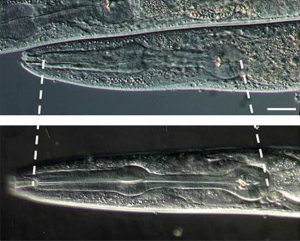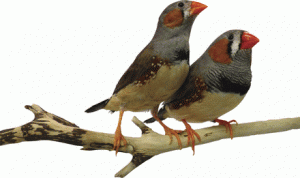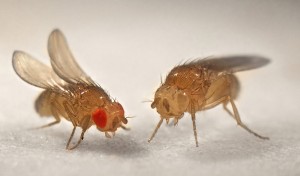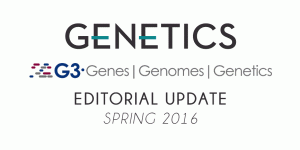Enter your address to receive notifications about new posts to your email.
Articles tagged G3 Journal
(198 results)
-
Genetic test helps ponies leave the past behind
For the past several decades, Shetland ponies’ collective past had caught up with them. A portion of the population of these miniature horses is affected by atavism, a phenomenon in which ancient characteristics are accidentally revived by mutations. Traits reincarnated in this way sometimes interact disastrously with the genetic background of the modern organism. For…
-
New in G3: Drosophila doublesex, Shetland pony SHOX, and SNP-SNP interactions
Check out the July issue of G3! ForestPMPlot: A Flexible Tool for Visualizing Heterogeneity Between Studies in Meta-analysis Eun Yong Kang, Yurang Park, Xiao Li, Ayellet V. Segrè, Buhm Han, and Eleazar Eskin G3 July 2016 6:1793-1798; Early Online May 18, 2016 doi:10.1534/g3.116.029439 Abstract | Full Text | Full Text (PDF) Sex Differences in Drosophila…
-
How bacteria dodge new antibiotic candidates
Antibiotics, a vital tool for fighting infections, were originally products of nature—the first antibiotic was serendipitously discovered in mold contaminating a bacterial culture. As antibiotic resistance becomes an increasingly serious threat, scientists are attempting to wring another type of pathogen-fighting drug from the wild: antimicrobial peptides. Antimicrobial peptides, or AMPs, are found in almost every…
-
Stretchy cells underlie organ development
Animals’ complex body plans come at a cost: their development is elaborate and must be delicately controlled. One critical aspect of development is size and shape control—every organ needs to fit in its place. The process requires the orchestration of a dizzying number of pathways, and understanding even a single component is far from trivial.…
-
New in G3: Cotton, Candida, and Chlamydomonas
Check out the June issue of G3! Investigations Sdt97: A Point Mutation in the 5′ Untranslated Region Confers Semidwarfism in Rice Jiping Tong, Zhengshu Han, Aonan Han, Xuejun Liu, Shiyong Zhang, Binying Fu, Jun Hu, Jingping Su, Shaoqing Li, Shengjun Wang, and Yingguo Zhu G3 June 2016 6:1491-1502; Early Online April 29, 2016 doi:10.1534/g3.116.028720 Abstract…
-
Runaway amplification: 800 copies and counting
Massive amplification of genes is a desperate strategy taken by stressed populations adapting to an environment that has become inhospitable. Such amplifications can give an underperforming gene a much-needed boost in productivity simply by increasing its copy number. But counterintuitively, research reported in the May issue of G3 implies these amplifications may arise even in…
-
New in G3: songbird speciation and mapping challenging mutations
Check out the May issue of G3! Investigations The Genetic Basis of Baculum Size and Shape Variation in Mice Nicholas G. Schultz, Jesse Ingels, Andrew Hillhouse, Keegan Wardwell, Peter L. Chang, James M. Cheverud, Cathleen Lutz, Lu Lu, Robert W. Williams, and Matthew D. Dean G3 May 2016 6:1141-1151; Early Online March 2, 2016 doi:10.1534/g3.116.027888…
-
Overly fastidious flies shed light on neurofibromatosis
Fruit flies that devote an excessive amount of time to grooming themselves could serve as a powerful tool for understanding the inherited disorder neurofibromatosis, type 1 (NF-1), report researchers in the latest issue of G3: Genes|Genomes|Genetics. NF-1 leads to the development of benign tumors in the peripheral nervous system. Common complications of NF-1…
-
GENETICS and G3 Spring 2016 Editorial Board Update
GENETICS and G3 are excited to welcome new editors and to announce editorial changes for the current quarter. GENETICS Senior Editors: Karl Broman, Nick H. Barton, Oliver Hobert, and Audrey Gasch GENETICS Associate Editors: Oliver Rando, Kirsten Bomblies, Giovanni Bosco, Graham Coop, Thomas E. Juenger, Alan Moses, John Novembre, Daven Presgraves, Valerie Reinke, and Nathan Springer G3 Associate Editors: Ross Houston,…
-
New in G3: heat shocked worms and CRISPRed chickens
Check out the April issue of G3! Meeting Report Evolution of Plant Phenotypes, from Genomes to Traits Josep M. Casacuberta, Scott Jackson, Olivier Panaud, Michael Purugganan, and Jonathan Wendel G3 April 2016 6:775-778; Early Online February 11, 2016 doi:10.1534/g3.115.025502 Full Text | Full Text (PDF) Investigations Utilizing Gene Tree Variation to Identify Candidate Effector Genes…
-
Wine yeast genomes lack diversity
Sequencing the genomes of hundreds of strains of the wine yeast S. cerevisiae has revealed little genetic diversity and high levels of inbreeding. In many cases, yeast strains sold by different companies were almost genetically identical. The results, published in the April issue of G3: Genes|Genomes|Genetics, suggest that winemakers attempting to develop improved wine yeasts…


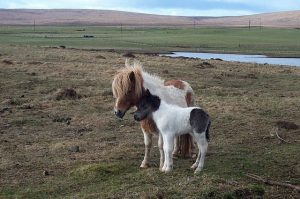
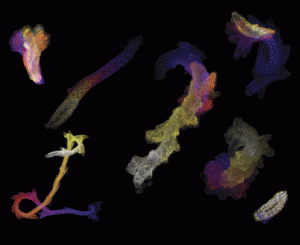
![Molecular model of penicillin, the first antibiotic discovered. Later, antimicrobial peptides were also found to have antibiotic properties. By Science Museum London / Science and Society Picture Library [CC BY-SA 2.0 (http://creativecommons.org/licenses/by-sa/2.0)], via Wikimedia Commons.](https://s36063.pcdn.co/wp-content/uploads/2016/06/Molecular_model_of_Penicillin_by_Dorothy_Hodgkin_9663803982-300x212.jpg)
